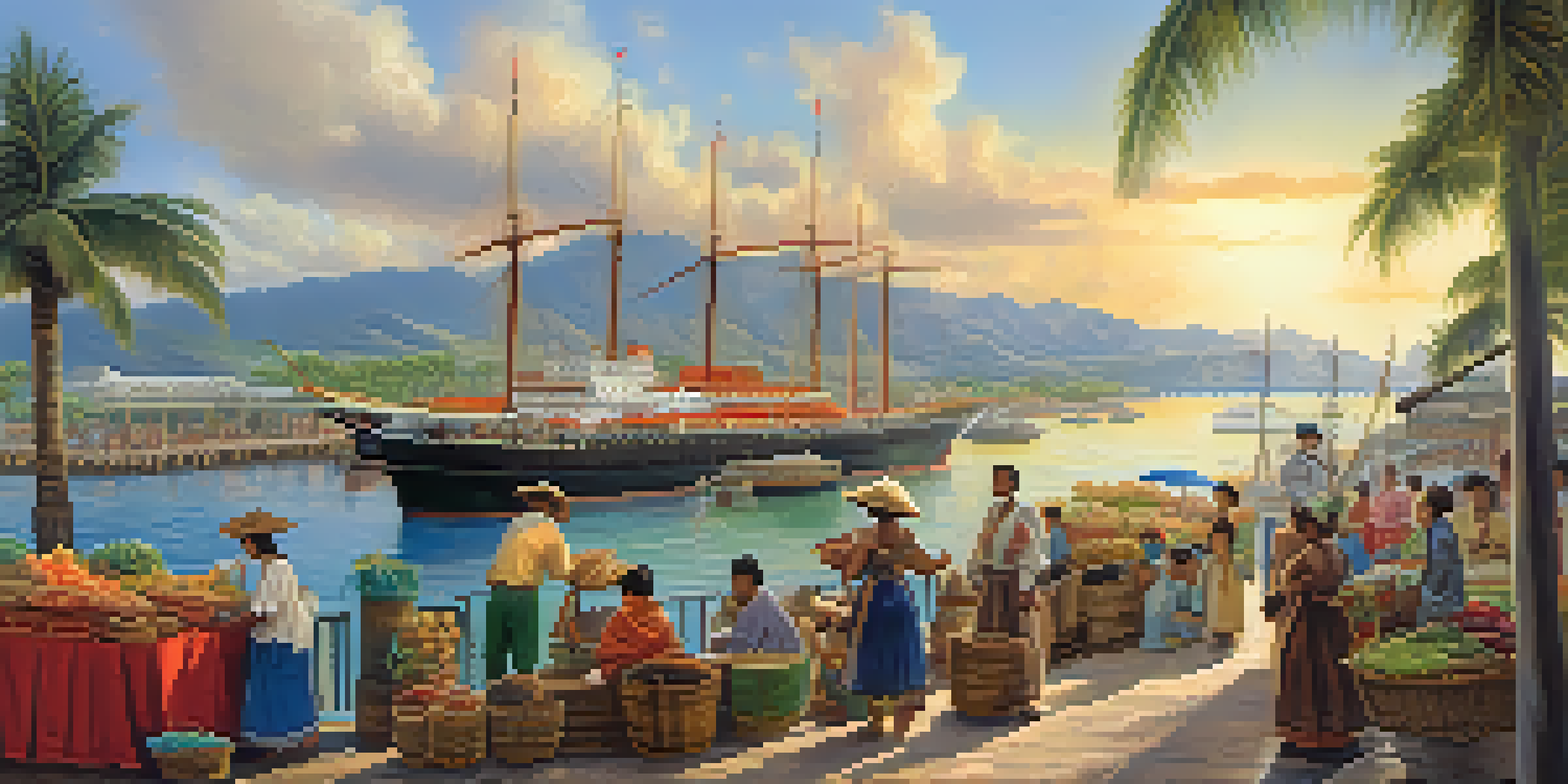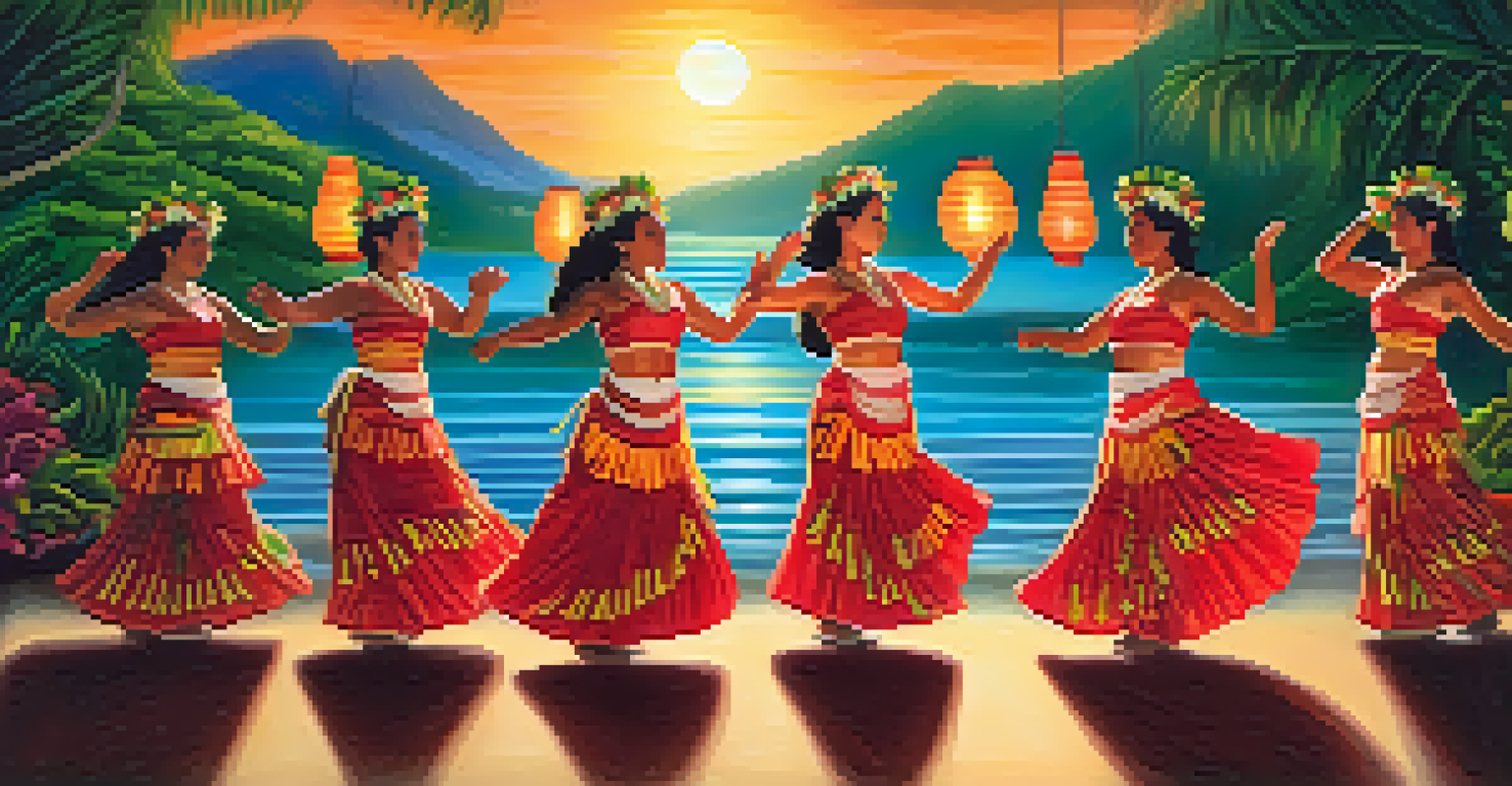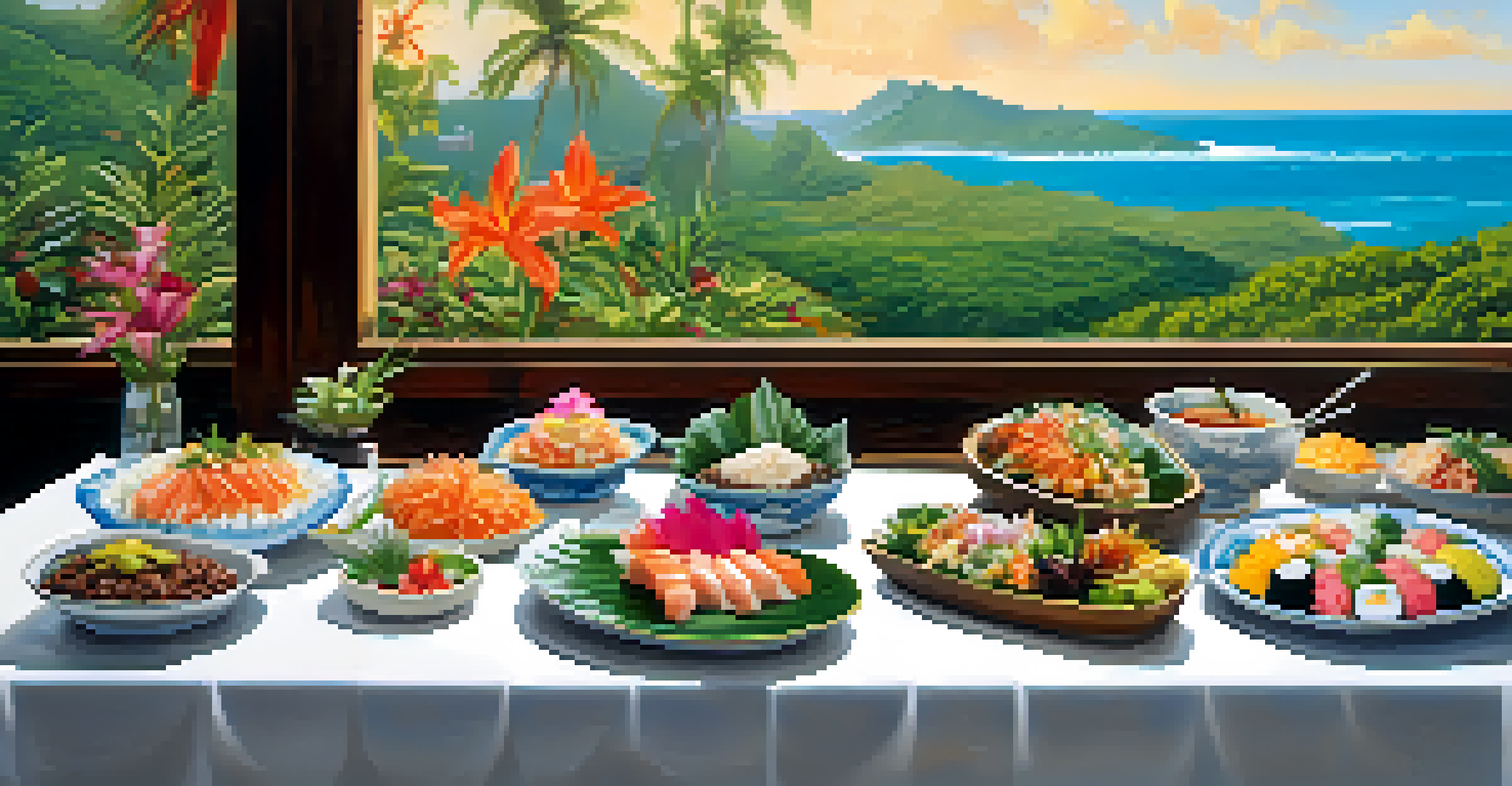Cultural Exchange via Historical Trade Routes in Honolulu

The Significance of Trade Routes in History
Trade routes have been the veins of human civilization, connecting diverse cultures and facilitating the exchange of goods, ideas, and beliefs. In historical contexts, these paths served not just as channels for commerce but also as bridges for cultural interactions. Honolulu, positioned strategically in the Pacific, became a melting pot of cultures due to its vital trade routes, particularly during the 19th century.
Trade is a vital part of human interaction that creates shared identities and cultural exchanges.
As ships from various nations docked in Honolulu, they brought not only products like sugar, spices, and textiles but also unique cultural practices and traditions. This influx transformed the local Hawaiian culture, blending indigenous elements with influences from Asia, Europe, and North America. Such interactions led to the emergence of a vibrant, multi-ethnic community that shaped modern Honolulu.
The impact of these historical trade routes is visible today, as the city continues to celebrate its diverse heritage through festivals, culinary experiences, and art. Understanding this significance helps us appreciate the depth and richness of Honolulu's cultural identity.
Indigenous Hawaiian Culture and Its Evolution
Before the arrival of trade routes, Hawaiian culture was already rich and complex, characterized by its traditions, language, and practices. Indigenous Hawaiians thrived on the land, utilizing the natural resources for sustenance, shelter, and spirituality. However, the introduction of trade significantly altered the social fabric of their communities.

As foreign traders and settlers arrived, they brought new technologies and ideas that began to influence native practices. For instance, the introduction of tools and farming techniques from other cultures improved agricultural yields, while new materials enriched traditional crafts. This blend of old and new created a dynamic environment where cultural exchange thrived.
Trade Routes Foster Cultural Exchange
Historical trade routes in Honolulu connected diverse cultures, facilitating the exchange of goods, ideas, and traditions.
Despite the challenges of colonization, Hawaiian culture has shown resilience and adaptability, continuously evolving while honoring its roots. Today, this blend of indigenous and foreign influences is celebrated through cultural festivals, hula performances, and traditional practices, reflecting the island's rich history.
Asian Influences on Honolulu's Cultural Landscape
The arrival of Asian immigrants during the 19th century had a profound impact on Honolulu's cultural landscape. Chinese, Japanese, Filipino, and Portuguese communities brought their traditions, cuisines, and languages, enriching the local culture. Their contributions can be seen in various aspects of life, from agriculture to culinary practices.
Culture is the widening of the mind and of the spirit.
For example, the introduction of rice cultivation and the popularization of dishes such as dim sum and sushi have become integral to Honolulu's food scene. These culinary exchanges have transformed local palates and created a diverse gastronomic culture that attracts food lovers from around the world. Festivals celebrating Asian heritage, like the Chinese New Year and Obon Festival, further highlight this influence.
Moreover, the integration of Asian art forms, including martial arts and theater, has created a multifaceted cultural environment. This rich tapestry of influences showcases the importance of trade routes in fostering a continuous dialogue between cultures, ultimately enhancing the identity of Honolulu.
European Explorers and Their Cultural Footprint
European exploration played a significant role in shaping Honolulu's historical narrative, with explorers and traders leaving a lasting impact. The arrival of British and French ships brought new ideas, goods, and technologies, which influenced local practices and beliefs. This period marked the beginning of significant changes in governance, religion, and economy.
One notable example is the introduction of Christianity, which transformed the spiritual landscape of Hawaii. Missionaries arrived with the aim of converting the indigenous population, but they also contributed to the development of written Hawaiian language and education. This cultural exchange laid the groundwork for future generations to understand and appreciate their heritage.
Culinary Fusion Reflects Diversity
Honolulu's unique culinary scene showcases a blend of indigenous and foreign influences, resulting in a diverse gastronomic culture.
Additionally, European architectural styles can be seen in many structures across Honolulu, from historic churches to government buildings. These influences not only enriched the aesthetic appeal of the city but also serve as a reminder of the complex interplay between cultures that has defined Honolulu's growth over the centuries.
The Role of Trade in Shaping Local Art Forms
Trade routes in Honolulu have not only facilitated the exchange of goods and ideas but also shaped local art forms. The blending of cultures has led to the emergence of unique artistic expressions that reflect the island's diverse heritage. From traditional Hawaiian crafts to contemporary art, the influence of various cultures is evident.
For instance, the art of hula, deeply rooted in Hawaiian culture, has been enhanced by the rhythmic influences of Asian and European music. Artists have incorporated new instruments and styles, creating a dynamic performance art that captivates audiences. Similarly, visual arts have seen a fusion of native motifs with techniques borrowed from other cultures, resulting in innovative works that tell the stories of Honolulu's rich history.
Art shows, galleries, and cultural festivals celebrate this vibrant artistic landscape, drawing attention to the importance of trade in nurturing creativity. By appreciating these art forms, we gain insights into the shared experiences and histories that have shaped Honolulu.
Culinary Fusion: A Taste of Cultural Exchange
One of the most delicious outcomes of cultural exchange via trade routes in Honolulu is its unique culinary scene. The blend of indigenous Hawaiian ingredients with Asian, European, and other influences has resulted in a fusion of flavors that is truly one-of-a-kind. Dishes like poke, loco moco, and spam musubi reflect this rich tapestry of cultural influences.
Food festivals and farmer's markets in Honolulu showcase this culinary diversity, offering a platform for local chefs and home cooks to experiment and share their creations. Visitors can savor dishes that highlight the island's agricultural bounty while experiencing the stories and traditions behind each recipe. This culinary dialogue continues to evolve, drawing inspiration from both the past and present.
Modern Global Connections Thrive
Today, Honolulu continues to serve as a cultural crossroads, where global trade brings together a myriad of cultural influences.
Moreover, the growing popularity of farm-to-table practices emphasizes the importance of local ingredients, further enriching the culinary landscape. By embracing this fusion of cultures through food, Honolulu not only satisfies appetites but also fosters a deeper understanding of its shared history.
Modern Cultural Exchange and Global Connections
In today's interconnected world, the spirit of cultural exchange continues to thrive in Honolulu. The city serves as a hub for global trade, attracting people and ideas from across the globe. This modern exchange is evident in the city's festivals, art scenes, and culinary offerings, which reflect a myriad of cultural influences.
Events like the Honolulu Festival and Aloha Festivals celebrate this diversity, inviting locals and tourists alike to experience the richness of different cultures. These gatherings not only showcase traditional practices but also encourage dialogue and understanding among various communities. They highlight the importance of embracing differences while finding common ground.

As technology advances and global travel becomes more accessible, Honolulu's role as a cultural crossroads is set to expand. The ongoing exchange of ideas, art, and traditions promises to create a vibrant future, enriching the city's cultural fabric and ensuring that the legacy of its historical trade routes lives on.